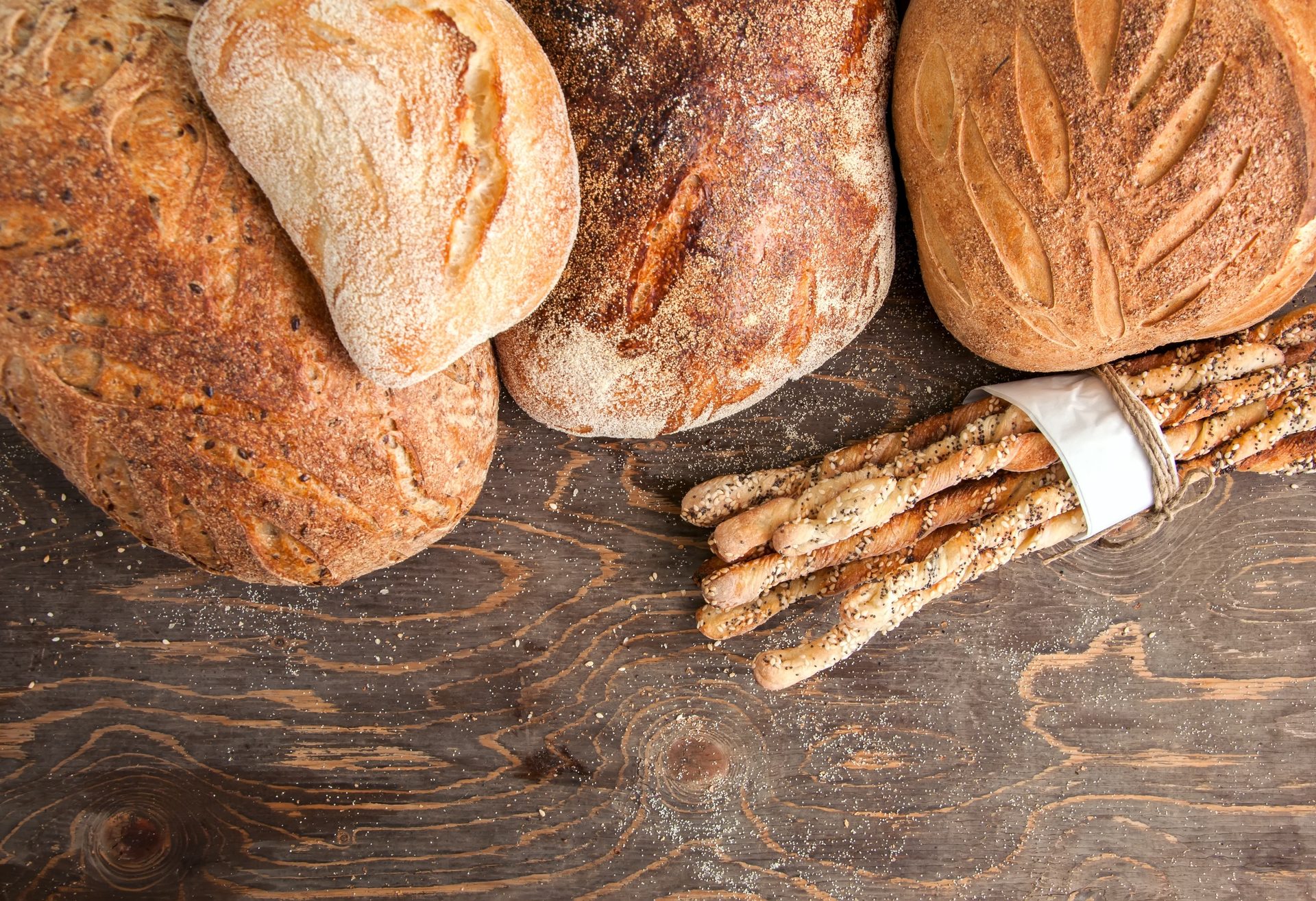Emulsifiers and enzymes
ingredients
The BOTTOM LINE
- Healthy-eating trends help fuel innovations
- Emulsifiers are helpful in blending and attaining consistency
- Enzymes combine clean-label and functionality benefits
Neat and clean
Snack and bakery producers increasingly are turning to clean-label enzyme and emulsification solutions.
Joyce Friedberg, Contributing Writer
Processing aides are ingredients typically used in small quantities, but they can have a big impact on the functional properties in snack and bakery products. Emulsifiers and enzymes are two examples of such ingredients.

SPONSORED BY
Dave Lindhorst, technical services manager with Cargill, provides an explanation of emulsifiers and the broad range of benefits these ingredients can provide, especially within baked goods: “First and foremost, emulsifiers help bring non-homogenous mixtures together; as a result they play critical roles with blending and help ensure consistency. The importance of emulsifiers is particularly apparent in bread, where they help strengthen the dough by working within the gluten matrix. They also reduce dough stickiness, making it more machinable, and even help prevent dough tearing, as it goes through automated processes. From beginning to finished product, a bread dough must withstand a lot of abuse; it’s pushed, pressed, chopped, and ultimately sliced—emulsifiers can help maintain product consistency.”
“Often, emulsifiers are divided into two general categories: dough strengtheners and crumb softeners,” Lindhorst continues. “While emulsifiers perform both functions, some are more effective at one aspect than the other. As a result, the first step is understanding what functional role they’ll be fulfilling in the application. In breads, emulsifiers are typically used for their dough conditioning properties, improving dough stability for processing. They strengthen the gluten matrix, yielding finished loaves with increased volume and enhanced crumb structure, as well as help with crumb softness and shelf life. Beyond bread, emulsifiers are used in cakes and muffins to provide for fine crumb structure, softness, and improved shelf life by slowing staling.”
Emulsifiers also can play a role in icings and jelly fillings, where they help with viscosity and lift. In addition, they can also act as an egg replacement solution, as eggs contain lecithin.
New enzyme ingredients and uses
Clean label is a trend that is evolving from a want to a need or expectation. As a result, more and more manufacturers are turning to enzymes since they are clean label and can provide functional properties. “More diverse enzymes have entered the market, expanding the breadth of applications they are used in. Bakers and snack makers can now use enzymes to help improve gluten network, reduce floor time, relax dough, increase machinability, replace fat systems, replace DATEM, provide strength and reduce the usage of vital wheat gluten,” explains Sherrill Cropper, new product development lab manager with Lesaffre.
Many of the company’s latest enzyme-based ingredient launches offer cost and formulations efficiencies by combining multiple benefits into a single ingredient. Cropper shares the highlights of these new products:
- Star-Zyme STR 701R: extends shelf life, provides dough machinability, strength, and volume while replacing DATEM, mono and diglycerides (MDG), sodium stearoyl lactylate (SSL), vital wheat gluten, and L-cysteine
- Star-Zyme STR 601: strengthens dough, improves dough tolerance, improves crumb structure, and enhances volume of finished baked goods, while replacing DATEM, SSL, and vital wheat gluten
- Both enzymes can be used in a broad range of applications: flatbreads, bagels, crackers, croissants and pastries, crusty bread, doughnuts, multigrain bread, pan bread, pizza crust, pretzels, rolls and buns, sweet bread, sourdough, and whole wheat bread.

Courtesy of AB Mauri
Lesaffre also offers enzyme-based anti-staling and antimicrobial ingredients sourced from grain that are not only clean label but also help reduce food waste. “Our ingredient Saf Pro Star-Zyme AST (anti-staling) Bun & Flatbread + NMI (natural mold inhibitor) is an all-natural dough conditioner specially formulated for shelf-life extensions. Designed to be a turnkey option for industrial bakeries, this product combines anti-staling enzymes with cultured wheat starch to maintain the shelf life without altering the textural experience,” shares Cropper. The ingredient can be used in pizza, flatbreads, buns, tortillas, and pitas.
Bellarise has a few new developments in their custom enzyme-based dough conditioners and softeners. Cam Suarez-Bitar, director of marketing and public relations of Bellarise, describes the features of these new products.
- Bellarise Low pH Softener: clean label, non-GMO, all-natural, and crafted to help industrial and commercial bakeries extend the shelf life of their fermented breads. Maintaining freshness for a longer period of time has always been one of the biggest challenges facing large bakeries that produce fermented breads at scale. This new ingredient reportedly solves that problem in one step, and gives consumers an authentic sourdough experience that lasts longer, while offering a more resilient bread with a great crumb structure, texture, and aroma.
- Bellarise Fermenta: clean label, all-natural, and non-GMO flavoring line for industrial and commercial bakeries to bake fermented breads at scale. The proprietary flavor blend and custom built-in dough conditioning and softening systems are designed to give bakeries everything they need to get the best out of their fermented dough, all in one package. The flavor system without the dough conditioner or softening properties is also available.
- Bellarise 5% Brioche Base: vegan and dairy-free base for making brioche. It opens the door for bakeries to offer vegan brioche in a range of different applications. The product was designed for customers who wanted the chance to bake vegan brioche and serve a new and emerging segment of the market with an appetite for plant-based foods.
- Bellarise BR-1500 Blue dough conditioner: a dough conditioning system that can replace DATEM. The product also enhances a frozen dough’s machinability and texture, all while being non-GMO, all-natural, and clean label.

Courtesy of Bellarise
AB Mauri has created two new enzyme-based solutions. Indulge Fry Shortening Reduction reduces the oil uptake on donuts while maintaining the quality, texture, volume, and shelf life of the product. The ingredient is added with the other dry ingredients when making the dough. “Our goal with this solution is to help bakeries use less frying fat. This is not only a cost-saving but also a sustainability effort as most frying oils and shortenings are palm-based. As we know, dependence on palm oil continues to help lead deforestation,” shares Nicole Rees, product director for AB Mauri North America.
The company has also launched Softase Palladium 2300 which are intended to offer the following features and benefits for bakers:
- Improved softness with category leading resilience
- Produces bread with unique, fresh texture and fluffy, springy attributes
- Sweetness delivered enables bakers to remove 4-6% sugar from formula.
- Ideal for white, whole wheat, and a variety of breads, including enriched breads like brioche
“Our goal…is to help bakeries use less frying fat. This is not only a cost-saving but also a sustainability effort as most frying oils and shortenings are palm-based.”
— Nicole Rees, product director, AB Mauri North America

New emulsifier ingredients and uses
RIBUS, a functional ingredient manufacturing company, offers two lines of emulsifiers. Alicia Kasch, vice president of RIBUS, describes the products: “Nu-BAKE is an emulsifier and dough conditioner used in many types of baked goods to reduce water activity and reduce breakage. The ingredient will help retain moisture, while creating a uniform cell structure, which improves texture and moisture retention. Nu-BAKE is especially impressive in long shelf-life products, as it reduces moisture loss and baked goods do not become gummy. Another successful application is gluten-free, which is particularly difficult to get the right texture, since other grains don’t hydrate properly. Nu-BAKE will assist in hydrating those grains, which will give the gluten-free product a similar bite and mouthfeel to a product that did contain gluten.”
Nu-RICE is a plant-based emulsifier and alternative to mono and diglycerides and soy or sunflower lecithin, it is also works well as an extrusion processing aid. Both ingredients are clean-label, non-GMO, gluten-free, kosher, and vegan, and they reportedly work well in extruded snacks, bars, cookies, and crackers.

Courtesy of Cargill
Lecithin is a common emulsifier used in wide range of baked goods, including breads, cakes, muffins, cookies, crackers, fillings, icings, and tortillas. With the interest in plant-based products growing, Cargill offers several plant-sourced lecithin products that manufacturers can use including lecithin sourced from soy, canola, and sunflower. These are available in both liquid and powdered formats. The company also provides customers with non-GMO options with their canola and sunflower lecithin products.
Emulsifiers, enzymes, and processing aids will continue to play an important role in snack and bakery products, but with cleaner labels being the desired outcome. SF&WB




